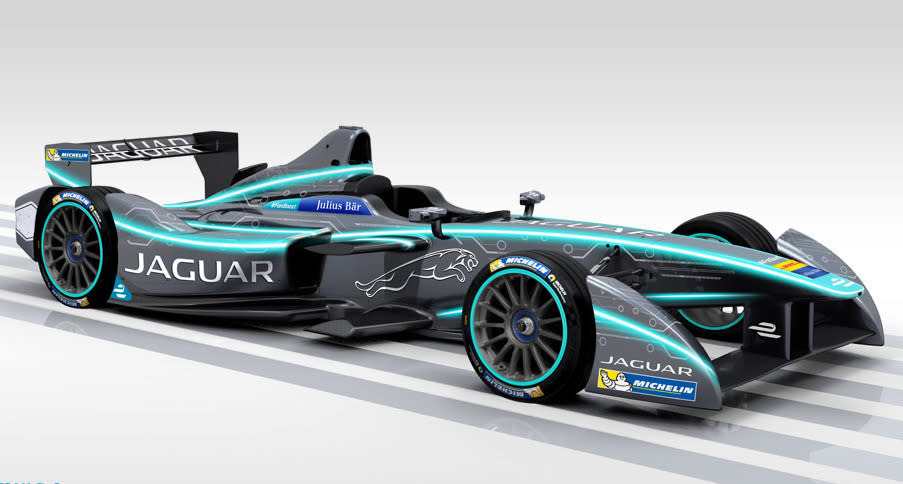Jaguar Returns To Racing In The All-Electric Formula E

During its first season, FIA Formula E—a global series where drivers compete in all-electric open wheel race cars—was met with plenty of criticism. With just 200-270 horsepower and grooved all-weather tires, the machines were not fast, and their sound was akin to an army of unamused hamsters. And these electric vehicles would run out of juice midway through a race, meaning that drivers would, literally, have to switch cars during a pit stop.
But that hasn’t stopped Jaguar from signing up, announcing the British (Indian) marque’s storied return to the world of auto racing in the 2016-2017 Formula E championship.
Part of that reason is Formula E—unlike most other race series in the world, where the word “spec” rules supreme—is beginning to open its doors and allow for innovation. In its second season, teams are permitted to develop their own powertrains, from the e-motor to the invertor to the transmission. That has meant that some have opted for dual electric motors while other teams stuck with a single unit, and the gear options range from a 4-speed to a one-speed. In total, of the ten teams and eight manufacturers competing, this new season has seen seven different powertrain layouts, all vying to prove that their methodology is best.
This level of innovation intrigues the public as well as automakers like Jaguar. And things will only get better when manufacturers are allowed to develop their own batteries. Jaguar will enter the series in season three, and views it as a way to advance its own electric technologies that will ultimately grace its road-going vehicles.
“Electric vehicles will absolutely play a role in Jaguar Land Rover’s future product portfolio and Formula E will give us a unique opportunity to further our development of electrification technologies,” said Nick Rogers, group engineering director for Jaguar Land Rover. “It is my belief that over the next five years we will see more changes in the automotive world than in the last three decades. The future is about being more connected and more sustainable; electrification and lightweight technologies are becoming more important than ever as urbanization continues to increase.”

If there’s one thing race fans have been craving, it’s innovation. Gone are the days when turbine-powered cars took on Indy, or the Cooper Climax brought about the rear-engined revolution. Today, every car is basically alike, just as it is in NASCAR. Beyond a way to train engineers and brand their company, few tangible links to the cars we see in dealerships remain.
And that’s where Formula E has a chance. Attracting fans is important, but as we’ve always seen in motorsports, attracting the deep-pocketed manufacturers is more important. With electric vehicles becoming a priority for every automaker, opening up the powertrain for innovation provides a true connection between racing and a brand’s future portfolio. While we’d love to welcome back Jaguar to racing in the form of a wild LMP1 Le Mans racer, in many ways, Formula E does make more sense.

